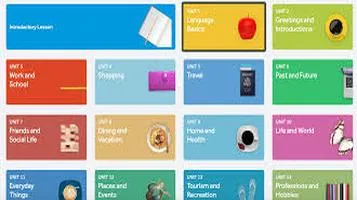Rosetta Stone Language Learning Lifestyle: A Comprehensive Review
Rosetta Stone Language Learning Lifestyle is an immersive and interactive program designed to facilitate language acquisition through a comprehensive, intuitive approach. Renowned for its dynamic, context-based teaching methodology, Rosetta Stone enables learners to naturally absorb languages the way they did their native tongue. The program emphasizes speaking, listening, reading, and writing skills, utilizing speech recognition technology to perfect pronunciation. With over 24 languages offered, learners can customize their experience to fit their individual pace and goals. The platform's user-friendly interface and mobile accessibility allow for seamless integration into daily routines, making language learning a part of everyday life. Whether for travel, career advancement, or personal enrichment, Rosetta Stone empowers users to confidently communicate in a new language.

Rosetta Stone has long been a household name in the realm of language learning. With a history stretching back to the early 1990s, the platform has continually evolved, integrating cutting-edge technology and pedagogical theories to facilitate language acquisition. The "Language Learning Lifestyle" approach that Rosetta Stone promotes is more than just a series of lessons; it's an immersive, comprehensive experience aimed at making language learning an integral part of daily life. Here’s an in-depth look at its strengths, areas for improvement, and overall effectiveness.
Immersive Methodology
At the core of Rosetta Stone’s philosophy is the immersive approach. Unlike traditional methods that rely heavily on translation and rote memorization, Rosetta Stone throws learners into the deep end, encouraging them to think and respond directly in the target language. The program does this through a combination of images, text, and sound, creating a context that mimics how we naturally acquire our first language.
This immersion is particularly effective for beginners who need to develop an intuitive grasp of basic vocabulary and grammar. By associating words with images and actions, learners can build connections without constantly reverting to their native language. This method fosters a more organic understanding and helps in developing long-term retention.
User Interface and Experience
Rosetta Stone’s user interface is clean, intuitive, and user-friendly. The lessons are well-structured and gradually increase in complexity, allowing learners to build confidence as they progress. Each lesson is broken into manageable chunks, which makes it easier to fit language learning into a busy schedule. Whether you have 10 minutes during a coffee break or an hour in the evening, you can make meaningful progress.
One feature that stands out is the speech recognition technology. Rosetta Stone uses advanced algorithms to evaluate your pronunciation and provide immediate feedback. This is particularly useful for languages with sounds that are not present in your native tongue. While the technology isn’t perfect and can sometimes miss nuances, it’s a valuable tool for developing speaking skills.
Versatility and Accessibility
One of the standout features of Rosetta Stone’s Language Learning Lifestyle is its versatility. The platform is available on multiple devices, including desktop, tablet, and mobile. This cross-platform compatibility ensures that you can continue your language learning journey regardless of where you are. The mobile app is particularly well-designed, with offline capabilities that make it easy to practice on the go.
Rosetta Stone also offers a variety of supplementary features to enhance the learning experience. These include live tutoring sessions, where you can interact with a native speaker, and community events that allow you to practice in a more social setting. Additionally, the platform offers phrasebooks, stories, and audio companions to further enrich your learning experience.
Areas for Improvement
While Rosetta Stone excels in many areas, it’s not without its shortcomings. One of the main criticisms is the lack of explicit grammar instruction. While the immersive method helps in developing an intuitive understanding, some learners may find it challenging to grasp complex grammatical structures without more detailed explanations. Supplementing Rosetta Stone with additional grammar resources could be beneficial for such learners.
Another area for improvement is the cultural context. Language learning is deeply intertwined with culture, and while Rosetta Stone does incorporate some cultural elements, it’s often not as comprehensive as one might hope. Including more cultural insights and real-world contexts could make the learning experience richer and more engaging.
Pricing and Value
Rosetta Stone is often seen as a premium product, and its pricing reflects that. While it’s more expensive than some other language learning apps, the quality of content and the breadth of features justify the cost for many users. The platform offers various subscription plans, including a lifetime access option, which can be a worthwhile investment for serious language learners.
Conclusion
Rosetta Stone’s Language Learning Lifestyle is a robust, well-rounded approach to language acquisition. Its immersive methodology, user-friendly interface, and versatile accessibility make it a strong contender in the language learning market. While it has areas that could benefit from enhancement, particularly in grammar instruction and cultural context, its strengths far outweigh its weaknesses.
For those who are serious about incorporating a new language into their daily life, Rosetta Stone offers a comprehensive and effective solution. With consistent use, learners can expect to develop a solid foundation and gain the confidence to use their new language in real-world situations. Whether you’re a beginner or looking to brush up on your skills, Rosetta Stone is a valuable tool in the quest for language proficiency.






